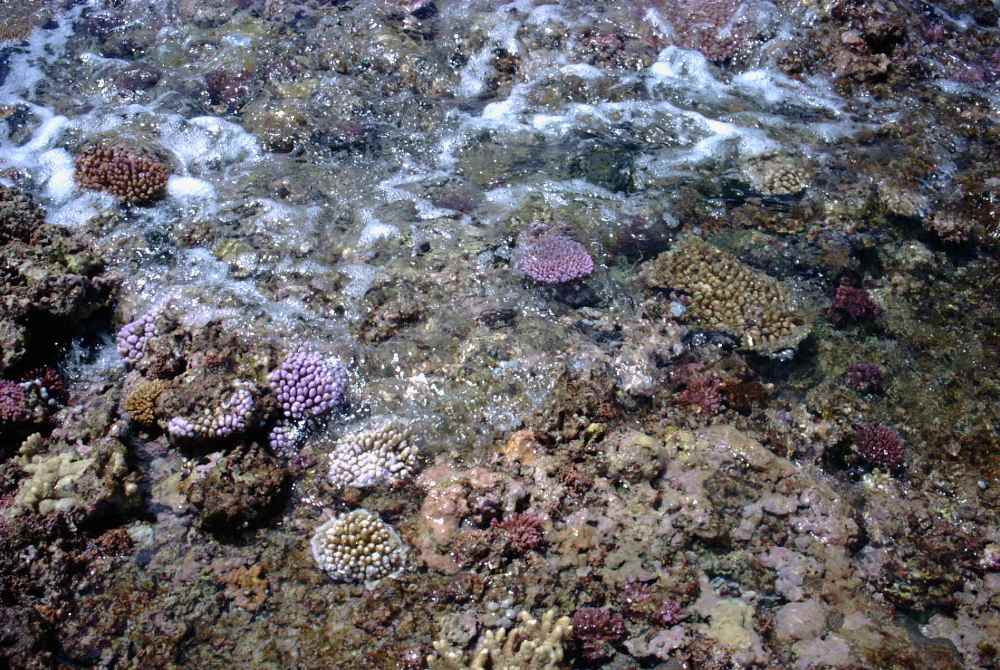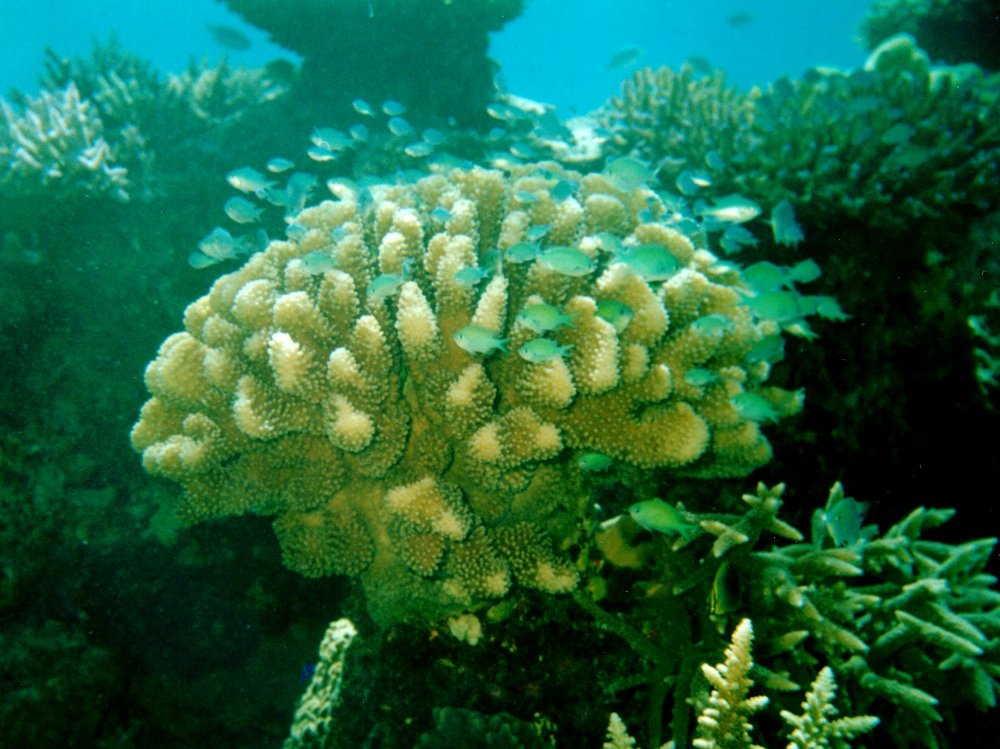Coral reefs as a whole are a complex living structure that provides nourishment for a massive amount of life on earth—including us.
South Pacific coral reef at low tide.
Living coral reefs are disappearing fast. Finding a healthy coral reef is rare. Although I have seen many coral reefs around the world from the Caribbean to Australia, from Indonesia to the Red Sea, I have only seen healthy ones in any number in the Tuamotus of French Polynesia and the Red Sea below Egypt. This is probably because both areas are not heavily populated, and, at least for the Tuamotus, not easily visited.
 Uninhabited island in the South Pacific and its trash strewn beach. Photo courtesy of Gayla Morkel Phelps, S/V Ariel.
Uninhabited island in the South Pacific and its trash strewn beach. Photo courtesy of Gayla Morkel Phelps, S/V Ariel.
The threats are numerous and mostly of the human variety. Climate change is, of course, a, if not the, major problem, but also pollution and the proliferation of plastic especially bags and bottles, and the horrendous scouring of all the ocean’s habitats by the voracious multinational fishing fleets that in the name of efficiency kill everything in their paths. In many parts of the western Pacific, particularly in Micronesia, including the Philippines, tropical fish for sale are obtained by poisoning the reef and capturing the spaced-out fish that float to the surface, many of which die before getting to market.
Chromis dancing around a coral head. Photo courtesy of Dave Jesinger, S/V Amoenitas.
“The complexity of rapid changes that we are seeing right now—changes in climate and ocean chemistry layered on top of overfishing and coastal pollution—is entirely unprecedented in the history of our planet.” See more at: http://blog.conservation.org/2012/07/the-state-of-the-worlds-reefs-a-coral-scientist-explains/#sthash.2j9eKkXZ.dpuf


